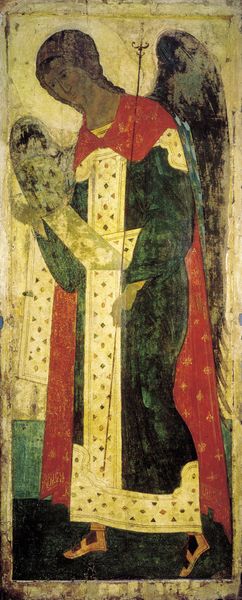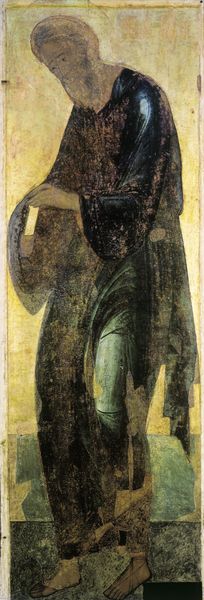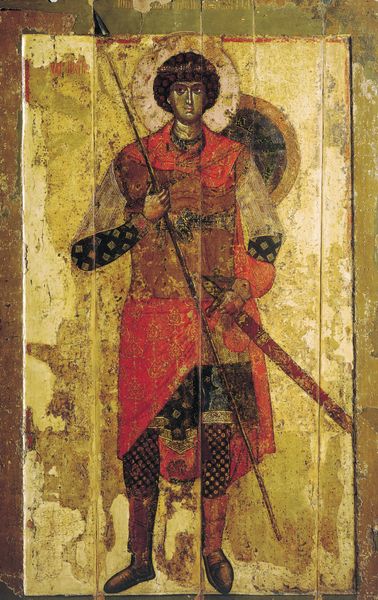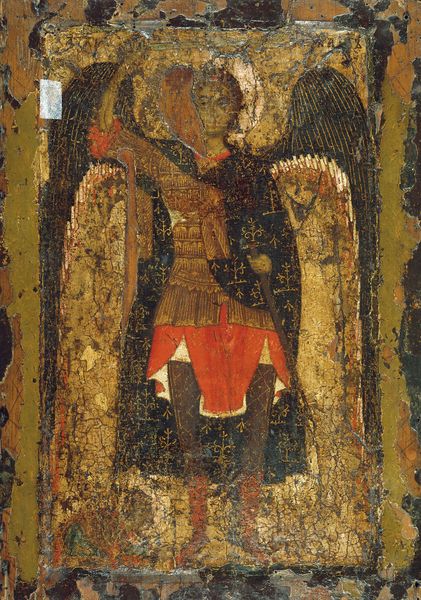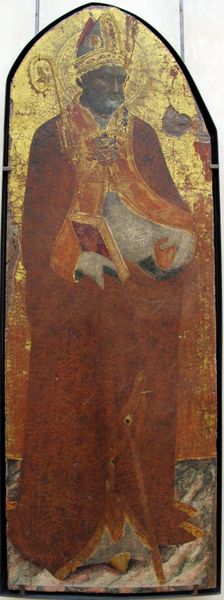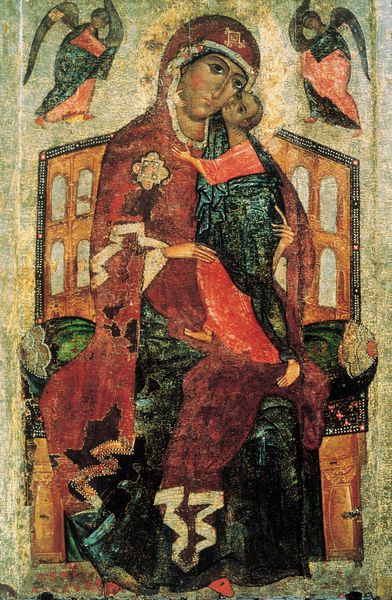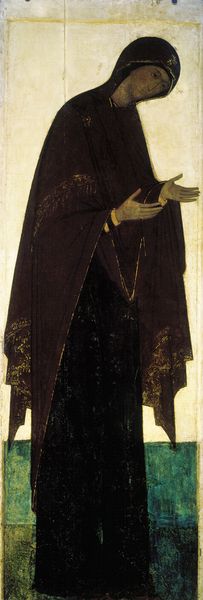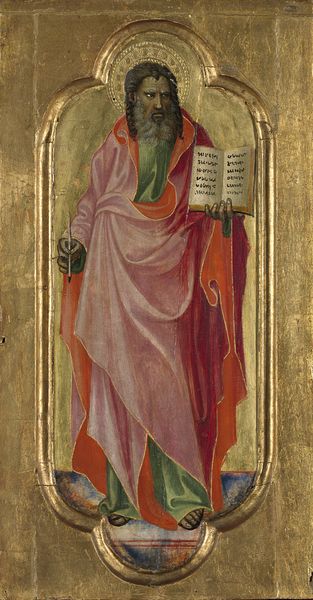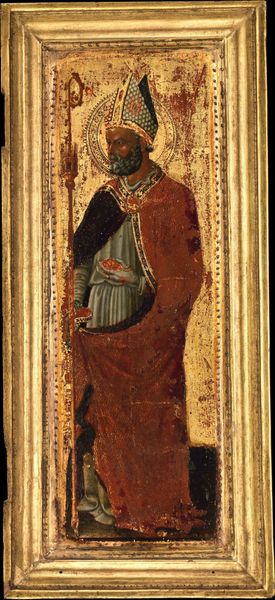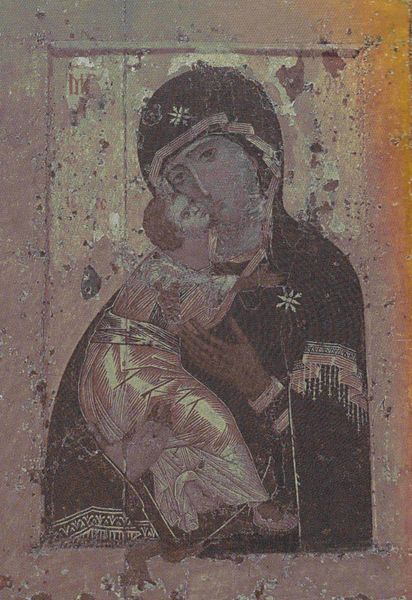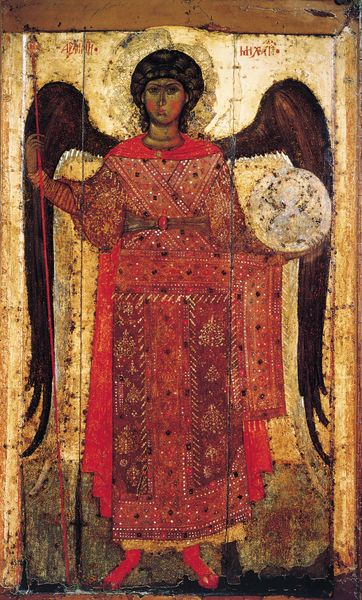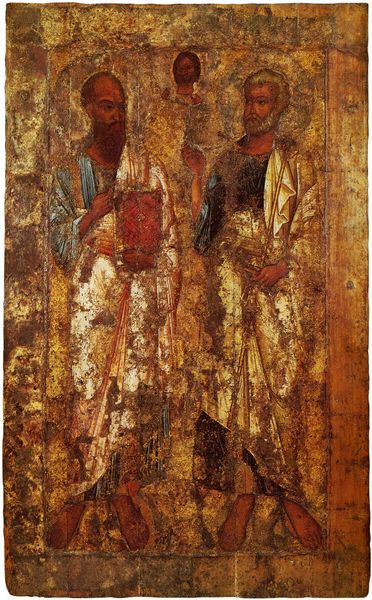
tempera, painting
#
byzantine-art
#
medieval
#
tempera
#
painting
#
figuration
#
christianity
#
painting painterly
#
history-painting
#
angel
Dimensions: 314 x 128 cm
Copyright: Public domain
Curator: Looking at Andrei Rublev’s "Archangel Michael" from 1408, I immediately sense a poignant stillness. Despite the visible wear of time on the tempera, there’s this undeniable quietude that radiates from the angel. It almost feels…melancholy? Editor: Yes, melancholic perhaps, but let's remember the context. This piece resides within the Assumption Cathedral, Vladimir, Russia. We must ask, who commissioned it and why? The placement indicates it was intended for devotional and symbolic purposes within a structured religious hierarchy. Curator: You are absolutely right to consider context! When I gaze into Michael's eyes, I find myself wondering about the unseen worlds this angel inhabits. Is it loneliness, responsibility, or something else entirely weighing on his mind? And, goodness, just look at the intricate detailing of his robes! The patterning is incredibly well-preserved. Editor: Indeed. Those fine details of the Byzantine style speak to its origins in the Eastern Roman empire and, subsequently, its adoption within the Russian Orthodox tradition. Michael’s presentation isn't just aesthetic; it communicates power, order, and a specific ideological stance within the church and wider socio-political realms. Consider too the symbolic associations of angels – divine messengers, protectors, warriors. Curator: I keep wondering about his downcast gaze, it sets my imagination reeling, dreaming of ancient worlds, it is like something otherworldly captured in a familiar shape, or, more probably, that is how they envisioned something that no one ever saw. Editor: We cannot forget the power structures at play when these works were commissioned. This was likely commissioned by royalty or other religious figures to help maintain or spread religious adherence or power. I also wonder about the artist's personal interpretations against these religious directives. What negotiations may have occurred in its creation? What might his own investment have been in a particular presentation of divinity and the powers that sustain it? Curator: Exactly! And how amazing that we can stand here centuries later and ask all these questions. Editor: It demonstrates art's lasting power and how context shifts and layers across time.
Comments
No comments
Be the first to comment and join the conversation on the ultimate creative platform.
